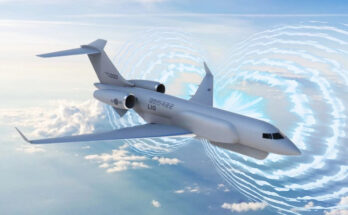With global tensions continuing to heat up, the Chinese government has announced its intention to increase its defense budget by 7.1 percent year-on-year for 2022. The official topline figure will amount to CNY1.45 trillion ($230 billion), which is CNY100 billion ($15 billion) more than allocated in 2021.
The defense budget increase for 2022 is expected to eclipse Chinese economic expansion, with growth in GDP forecast at around 5.5 percent for the year. A past determinant in China’s military allocations has been economic performance – meaning, when the Chinese economy grew, so did the defense budget. Hence, the military budget roughly paralleled the expansionary pace of the economy.
However, a decade ago there began to be signs of a slight decoupling from this previous trend as defense earmarks grew by double digits per annum from 2012 through 2015, while economic growth averaged about 7.5 percent.
Though no longer growing in double-digits in unison with the economy as was the norm for China prior to 2012, defense budget allocations have since usually outpaced economic expansions and likely will continue to do so even as China’s economic growth no longer occurs at breakneck speeds as in the first decade of the 2000s.
China's defense budget growth justified as restrained amid foreign media hype
https://t.co/2Jgn8shyjn pic.twitter.com/HcP4MlnJke— Zhang Heqing张和清 (@zhang_heqing) March 7, 2022
The larger question is whether the announced topline defense budget represents all military-related expenditure, or whether the actual unofficial figure is much greater. Elements such as military technological research and development and even some major weapons purchases are believed to be kept off-budget, thus raising actual defense investment figures to well above the official topline figure published by the Chinese state.
When factoring purchasing power parity (PPP) into an examination of China’s defense spending, the “bang for the buck” Beijing wrings from its spending is significantly higher than a sheer dollar figure, as internal costs of production and purchasing are not tied to currency exchange rates, and the salaried cost of maintaining a large standing military is less for China than it is for the U.S., Britain, France, etc.
State-owned defense enterprises channel loans provided by Chinese banks back into research and development and industrial facility upgrades, all with the intent of arming and rearming the military. This use of state-owned investment via recyclable funding coupled with civil-military fusion allows China’s spending to go further than the topline figures provided by the party or estimated by external sources.
China’s ever-increasing budget has fueled the largest maritime expansion in modern history, providing tremendous capacity in terms of capital ships for the Navy, the China Coast Guard (CCG), and the People’s Armed Forces Maritime Militia (PAFMM). Other inventories such as missiles, aircraft and unmanned aerial vehicles (UAVs) continue to grow as well. All told, the sheer military capacity and ongoing buildup, combined with a push to extend China’s naval outreach and territorial claims, have left many countries in the Asia-Pacific region concerned.
For its part, Beijing officially maintains that its defense budget is both proportionate and low in comparison to that of other developed nations.
Dan Darling is Forecast International’s director of military and defense markets. In this role, Dan oversees a team of analysts tasked with covering everything from budgeting to weapons systems to defense electronics and military aerospace. Additionally, for over 17 years Dan has, at various times, authored the International Military Markets reports for Europe, Eurasia, the Middle East and the Asia-Pacific region.
Dan's work has been cited in Defense News, Real Clear Defense, Asian Military Review, Al Jazeera, and Financial Express, among others, and he has also contributed commentary to The Diplomat, The National Interest and World Politics Review. He has been quoted in Arabian Business, the Financial Times, Flight International, The New York Times, Bloomberg and National Defense Magazine.
In addition, Dan has made guest appearances on the online radio show Midrats and on The Media Line, as well as The Red Line Podcast, plus media appearances on France 24 and World Is One News (WION).




